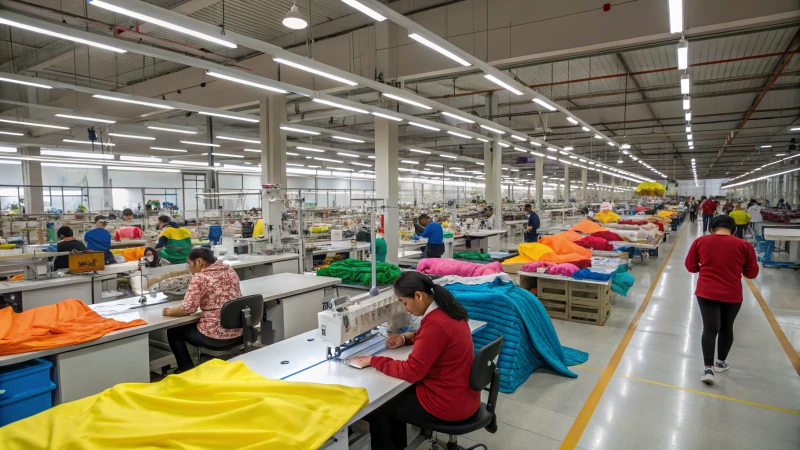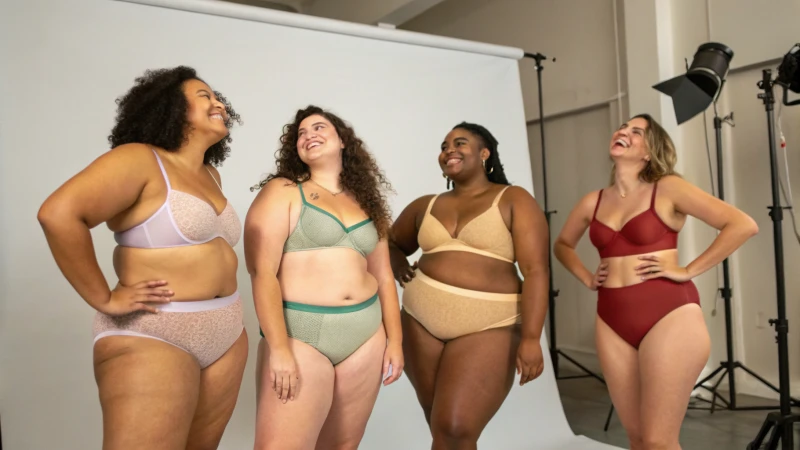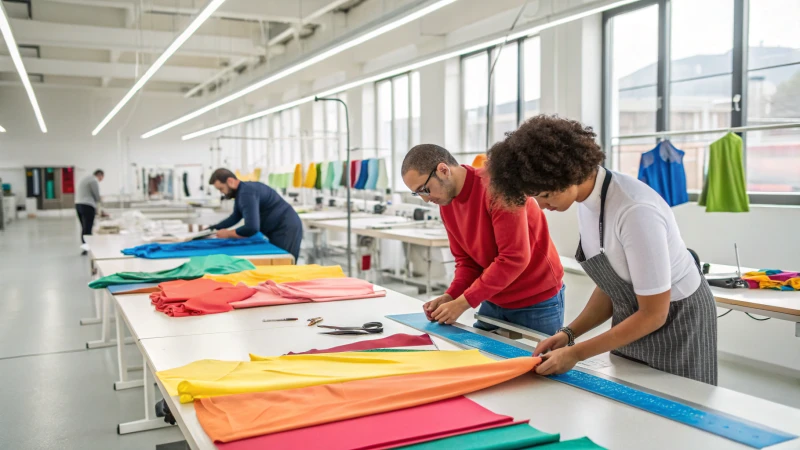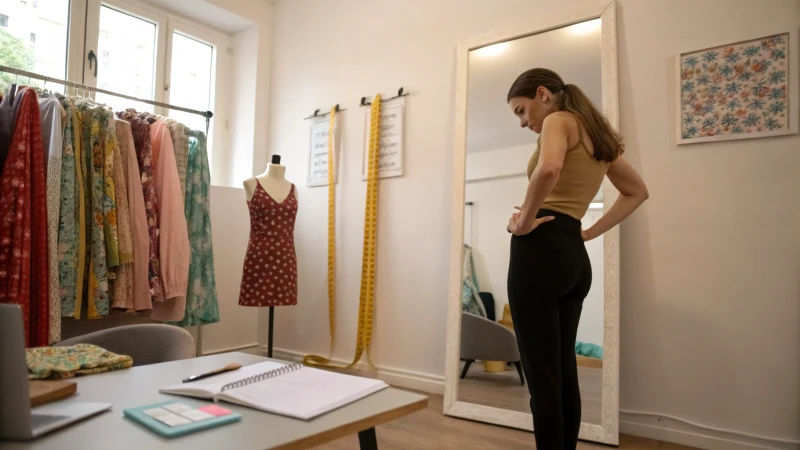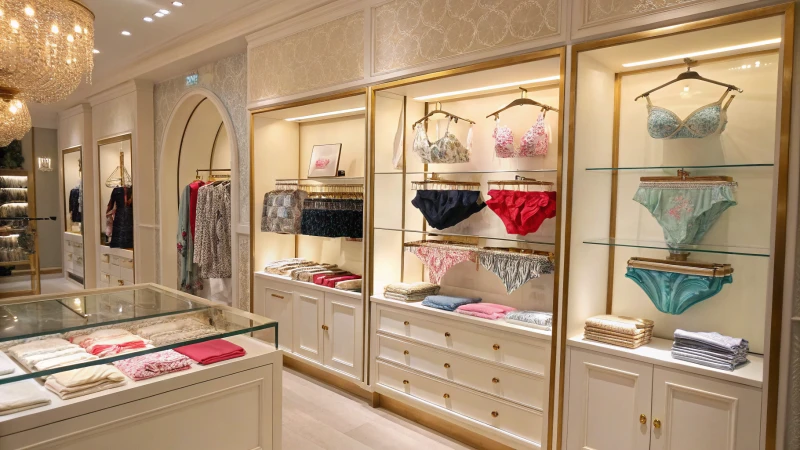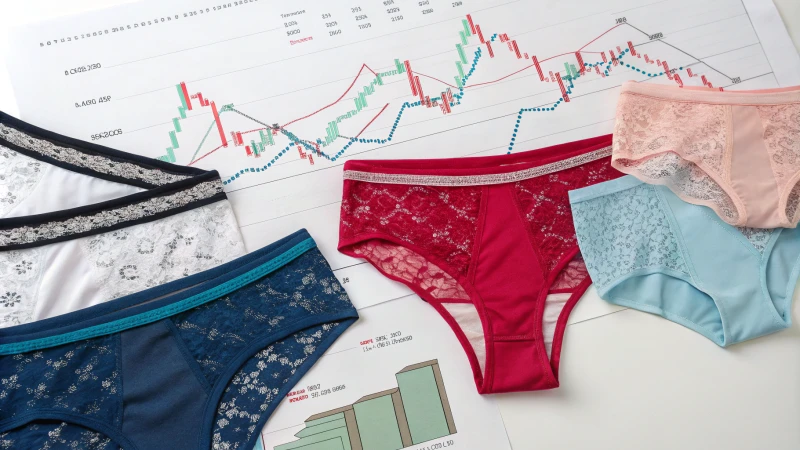
Ever wondered how data might change the comfort of your underwear?
Data analysis changes underwear design by giving deep insights into what consumers truly want. This information helps brands improve fit, comfort and style. Companies study trends and feedback. Innovation follows. Meeting market demands very often becomes possible. This increases customer happiness and loyalty.
I recall the first time data showed me its power in changing how we see fashion. It felt like holding a magic wand that uncovered people's real desires in clothes. In underwear's competitive world, such insights are extremely valuable. They help us design garments that feel truly personal, not just well-fitting.
Consider how top brands now use technology to discover what makes underwear appealing. It isn't just about perfect sizes. Understanding what users truly value - comfort, style and durability - is key. Using data lets us predict trends even before they emerge. Very important. Our products lead fashion instead of simply following it.
This potential is huge, reshaping how we let customer preferences drive innovation. Crafting experiences becomes as important as crafting products.
Data analysis improves fit in underwear design.True
Analyzing consumer feedback helps brands enhance the fit of their products.
Underwear design trends are unaffected by data insights.False
Data insights help identify and predict trends, influencing design choices.
How Does Consumer Feedback Shape Underwear Design?
Think about the last time you bought underwear and wanted a better fit. Many feel this way, including you. Your thoughts on this could very well influence the future of underwear design.
Customer opinions are vital in designing underwear. They provide important details about comfort, style and trends. Opinions from consumers probably help brands produce garments that genuinely satisfy their customers. These insights are truly essential.

Understanding Consumer Preferences
I often check reviews before buying something. Don't you? These honest opinions help designers know what we want from our underwear. Insights from reviews or surveys help brands address specific comfort issues1, such as fabric softness and waistband comfort. This leads to the creation of products that offer better fit and comfort.
Innovating Through Feedback
There is thrill in watching a brand change due to our feedback. Eco-friendly materials became popular, showing our voices matter. Brands use consumer feedback to innovate, identifying gaps in the market. For instance, demand for sustainable materials2 has driven the development of eco-friendly underwear options.
| Aspect | Feedback Impact | Example |
|---|---|---|
| Comfort | Fit adjustments | Flexible waistbands based on user reviews |
| Style | Trend alignment | Introduction of bold prints from suggestions |
| Sustainability | Material choice | Use of organic cotton due to customer demand |
Feedback helps brands not only fill market gaps but also try new materials and designs.
Building Brand Loyalty
Have you ever felt proud when a brand listens to you and makes changes? This bond pulls us back to them. When consumers see their feedback implemented in product designs, it fosters a sense of involvement and loyalty. Brands that actively engage with customer input can create a loyal customer base3, ensuring repeat purchases and positive word-of-mouth.
Exploring Global Trends
Global trends feel like glimpsing into the future. Feedback shows what's popular worldwide, like the need for inclusive sizing. Consumer feedback also sheds light on global trends, helping brands keep up with evolving tastes. By responding to these trends, brands stay relevant in a competitive market.
Real-World Application
Picture a brand fixing uncomfortable seams after hearing about it. Consider a brand that received feedback about its uncomfortable seams. By addressing this issue through redesigns and showcasing the improvements in new collections, they not just keep old customers but attract new ones looking for good solutions.
Consumer insights allow underwear designers to keep products fresh and suited to our real desires. By leveraging consumer insights, underwear designers can refine their offerings, ensuring that each product release aligns with current market demands4. This approach very likely increases happiness and strengthens a brand’s reputation for listening to its customers.
Consumer feedback drives eco-friendly underwear innovation.True
Feedback reveals demand for sustainable materials, prompting eco-friendly designs.
Brands ignore consumer feedback in underwear design.False
Brands actively use feedback to improve fit, style, and sustainability.
How Can Trend Analysis Improve Product Innovation?
Do you often think about how some brands know exactly what you want before you realize it yourself?
Trend analysis greatly fuels product innovation by identifying new consumer wants. Companies change direction fast. By reading market signals, businesses create innovative products. They align with future trends.

Understanding Trend Analysis
I have always been amazed by brands predicting what I will want next season. Their secret is trend analysis. By examining data like sales numbers or social media discussions, companies glimpse the future. They look for patterns and align strategies with what people might desire soon.
Benefits of Trend Analysis in Innovation
1. Anticipating Consumer Needs
Think about knowing what people desire before others. That's trend analysis. I remember working with a fashion brand. We used it to foresee the popularity of athleisure. This insight gave us a lead, letting us launch a collection as the trend started.
2. Improving Product Development
Trend analysis focuses not only on new products but also on improving existing ones. I saw a brand notice a move towards eco-friendly buying. They shifted, incorporating sustainable materials and suddenly their sales increased.
| Consumer Preference | Innovative Response |
|---|---|
| Sustainability | Eco-friendly fabrics |
| Tech Integration | Smart clothing |
Tools and Techniques
Several smart tools, like Google Trends, help businesses see what people search for over time. It’s like having a crystal ball for upcoming ideas in design and marketing.
- Social Listening: Remember the buzz about kombucha? Social listening tools detected it early, helping brands follow the trend.
- Competitor Analysis: Watching competitors' actions can show ways your brand might excel in the market.
Case Studies and Examples
- Tech Industry: Ever thought about how Apple stays ahead? They use trend analysis5 to include desirable tech features in their products.
- Fashion Brands: By predicting trends, fashion brands design collections that not only look stylish but also match future desires.
By using trend analysis6, businesses stay in tune with current and future needs, distinguishing themselves as pioneers in innovation.
Trend analysis predicts future consumer behaviors.True
Trend analysis examines data to forecast future events and behaviors.
Social listening is unrelated to trend analysis.False
Social listening helps identify trending topics, aiding trend analysis.
How is technology transforming the future of underwear design?
Imagine wearing underwear that fits like a second skin, all because of the wonders of technology.
New technologies like smart fabrics, 3D printing and AI-driven heat-mapping shape the future of underwear design. These advancements change how people experience comfort and fit. They also bring improvements in sustainability.
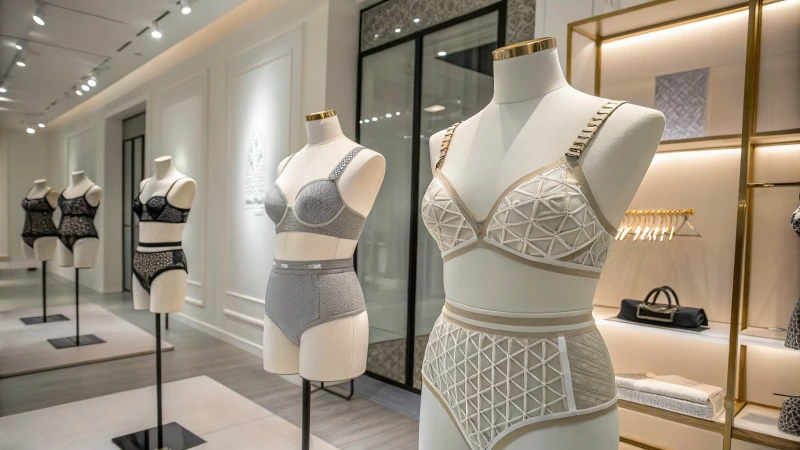
Smart Fabrics: The Next Frontier in Comfort
I remember the first time I wore clothes with smart fabric. It felt like having a personal thermostat that changed to suit my body. Smart fabrics are changing how underwear is designed. They use special threads or sensors to watch body temperature, moisture, and even heart rate. Some brands using smart fabrics7 create underwear that changes according to the wearer’s needs, improving both comfort and performance.
3D Printing: Customization at Its Best
Whenever I think of customization, 3D printing comes to mind. This amazing technology allows for precise changes and quick design testing. Underwear designers create complex lace designs or supports that fit different body shapes. With 3D printed designs8, brands offer custom products without the expense and waste of traditional methods.
| Technology | Benefit |
|---|---|
| Smart Fabrics | Enhanced comfort and performance through adaptability |
| 3D Printing | Customization and reduced waste |
AI-Driven Heat-Mapping: Perfecting the Fit
A perfect fit truly changes comfort. Artificial Intelligence (AI) is helping underwear fit the body perfectly. AI technology examines pressure and movement to design underwear that supports without discomfort. This innovation lets designers create garments that move smoothly with the wearer, really improving fit and comfort.
Sustainable Materials: Eco-Friendly Innovations
I really care about sustainability, and I find the move to eco-friendly fashion exciting. People want sustainable clothes, so new materials like organic cotton, bamboo fibers, and recycled polyester are developed. These materials lower environmental harm and have special features like being antimicrobial and breathable. They are very eco-conscious.
These developments show a big change in the underwear industry. Technology not only improves product quality but also meets new consumer expectations. Stay ahead by adopting these innovations in your brand's products.
Smart fabrics monitor heart rate in underwear.True
Smart fabrics use sensors to track physiological data like heart rate.
3D printing increases waste in underwear production.False
3D printing reduces waste by allowing precise customization and prototyping.
How Does Data Analysis Enhance Sustainability in Fashion?
Imagine a world where fashion is not only about style, but also about protecting the planet. Data analysis plays a major role here. It probably changes how sustainability works in the fashion industry.
Data analysis shows how to use resources wisely in fashion. It helps find what customers want, plan production smartly and use materials well. Less waste really benefits the environment. Fashion becomes more eco-friendly.
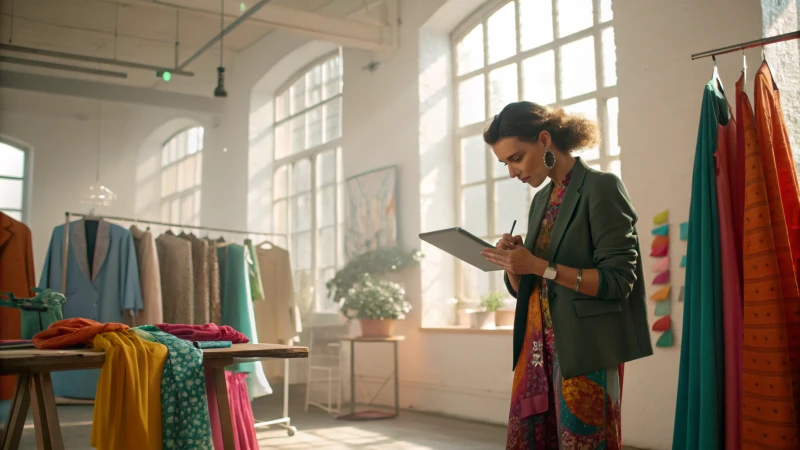
Understanding Consumer Behavior
I recall the first moment I understood how much information could change the fashion industry. I was drinking my morning coffee and read a story about a brand using information to guess fashion patterns. That’s when it became clear - knowing what customers really want helps stop overproduction and waste. Examining buying habits helps brands adjust their collections to real demand, creating only what's truly needed.
Data analysis helps fashion brands understand consumer preferences, allowing them to produce only what is needed. By analyzing purchase patterns, brands can forecast demand more accurately, thereby reducing overproduction and waste.
Optimizing Production Processes
One day, I visited a factory using data analysis for better production. Watching real-time information at work was like witnessing magic. Fast changes in manufacturing greatly cut down fabric waste and energy usage. Brands often rely on future predictions to spot problems in the supply chain and change operations quickly.
Data analytics tools enable brands to streamline their production processes. For example, real-time data allows for quick adjustments in manufacturing, minimizing fabric waste and energy consumption. Brands use predictive analytics9 to anticipate supply chain issues and adjust their operations accordingly.
Resource Management and Material Efficiency
I worked with a brand focused on environmentally-friendly materials. They used information to improve their sourcing choices, picking eco-friendly materials to lower environmental harm. Seeing how data helped them manage resources like water and energy was truly amazing.
By leveraging data, companies can better manage resources like water, energy, and raw materials. Data-driven insights into material usage help brands optimize their sourcing strategies, choosing sustainable materials that minimize environmental impact.
| Aspect | Benefits of Data Analysis |
|---|---|
| Consumer Trends | Accurate demand forecasting |
| Production | Reduced waste through process optimization |
| Resources | Efficient use of sustainable materials |
Case Studies and Examples
Brands like Patagonia inspire me with their dedication to the environment. They track their supply chain and material choices using data analysis, leading to a smaller carbon footprint. Studying their detailed practices gives practical ideas on how other brands might do the same.
Brands like Patagonia utilize data analysis to track and improve their sustainability metrics. By monitoring their supply chain and material sourcing, they have successfully reduced their carbon footprint and increased the use of recycled materials. A detailed case study10 on this can provide more insights into practical applications.
Challenges and Opportunities
Despite its advantages, using data in fashion has some challenges. I have seen companies have trouble spending on the right tools and people to really understand data. Privacy issues concerning consumer information also need attention.
While data analysis offers numerous benefits, it also presents challenges. Companies must invest in the right technology and talent to effectively interpret data. Additionally, privacy concerns related to consumer data must be addressed.
Still, data's power to spark new ideas in eco-friendly fashion is huge, offering chances for leadership in the industry.
For more knowledge on how top brands use data for eco-friendly goals, explore sustainability strategies11 employed by various fashion houses.
Data analysis reduces overproduction in fashion.True
Brands use data to forecast demand accurately, minimizing waste.
Predictive analytics increases fabric waste in fashion.False
Predictive analytics helps reduce waste by optimizing production.
Conclusion
Data analysis transforms underwear design by enhancing fit, comfort, and style through consumer insights, trend forecasting, and sustainable practices, ultimately driving customer satisfaction and brand loyalty.
Understanding comfort preferences can help brands make data-driven design improvements. ↩
Discover how sustainable fabrics are changing the underwear industry. ↩
Learn why integrating consumer feedback boosts brand loyalty. ↩
Explore the latest trends shaping the underwear market. ↩
Learn how tech giants leverage trend analysis to drive product innovation. ↩
Gain insights into how market trend analysis can influence business strategies and product development. ↩
Learn how smart fabrics are enhancing underwear functionality and providing new comfort levels. ↩
Discover how 3D printing is revolutionizing customization in fashion, including underwear design. ↩
Learn how predictive analytics can optimize fashion supply chains for sustainability. ↩
Explore Patagonia's successful strategies in using data for enhanced sustainability. ↩
Discover innovative sustainability strategies used by leading fashion brands. ↩


